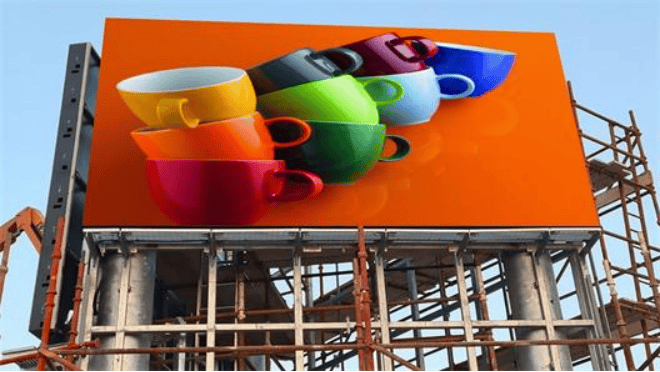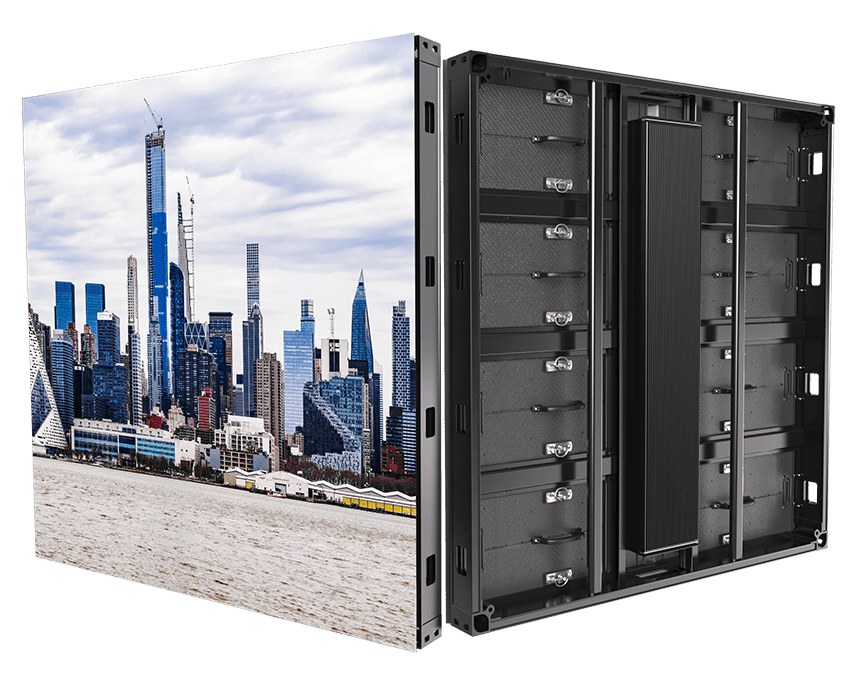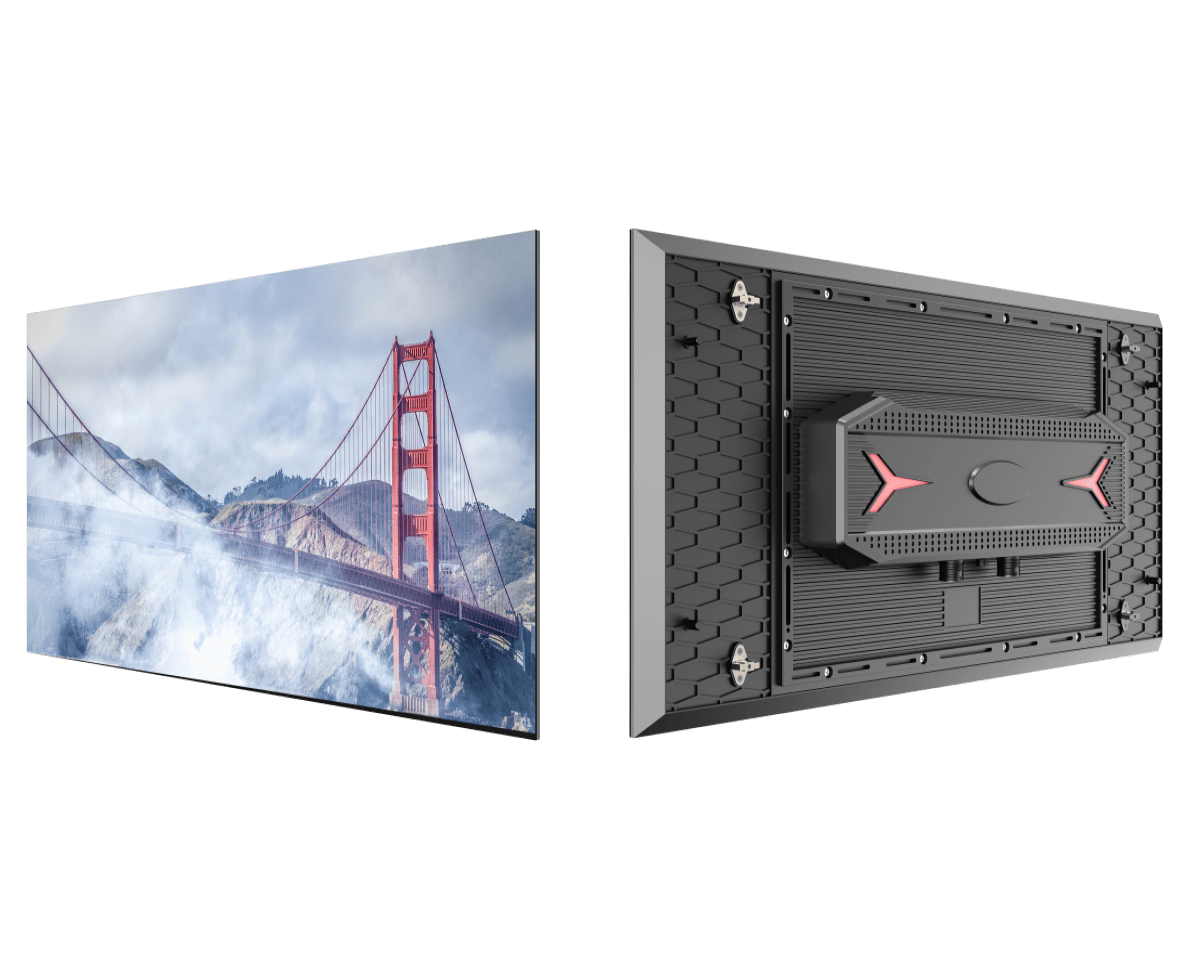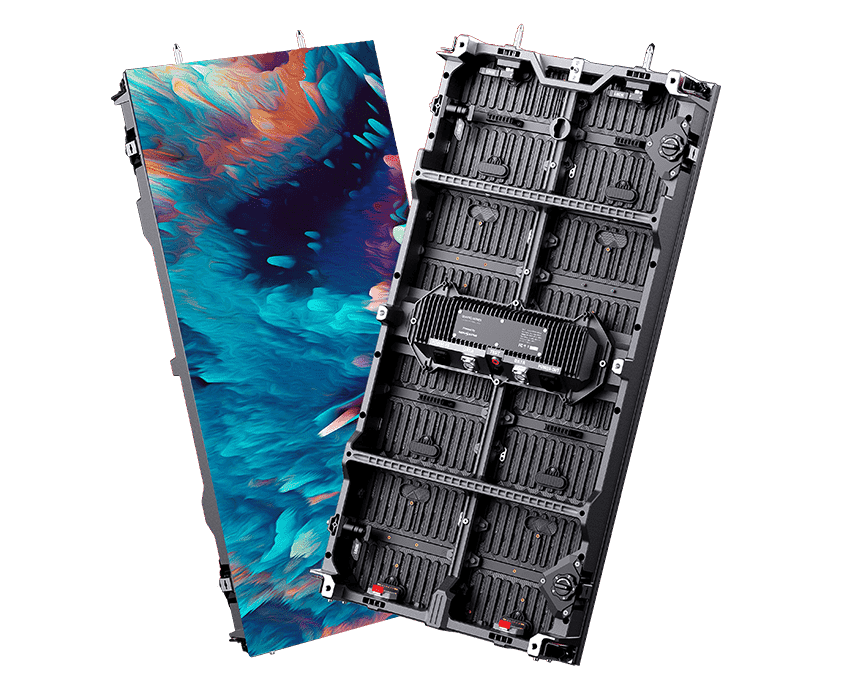Front Service vs. Rear Service LED Displays: Which Is Better for Your Business?
Views: 4574
Author: Site Editor
Publish Time: 2024-06-26
Origin: Site
There are two main maintenance methods for LED displays currently available on the market: front service and rear service. Each method has its own advantages and disadvantages, making it a challenge for businesses to determine which one is best suited for their needs. In this article, we'll explore the differences between the two types of LED displays and help you decide which one is better suited for your business.
What are front service LED displays?
A front service LED display is a type of LED display that can be easily accessed and serviced from the front of the display. As the name suggests, the front service LED display allows technicians or maintenance personnel to access the internal components of the display without having to remove the entire unit from the wall or ceiling.

Features and applications of front service LED displays
Front service LED displays are a popular choice for commercial advertising displays, event showcases, and conference or presentation settings due to their easy maintenance and cost savings. With convenient front panel access, display components can be directly accessed without requiring removal of the entire screen. These displays can be flexibly mounted on walls or support structures, making them ideal for environments where frequent updates or replacements are necessary. Despite their efficient maintenance and flexibility, front service LED displays have some limitations, including potential durability issues in outdoor environments, higher costs compared to fixed installations, and the time-consuming process of replacing individual modules. Nevertheless, they remain a reliable and versatile solution for LED display needs.
What are rear service LED displays?
Rear service LED displays are often used in outdoor environments, such as outdoor plazas, large sports arenas, and concert venues.
Rear service LED displays are LED display screens that are designed with a special feature that allows for easy maintenance and servicing from the back of the screen. This means that technicians or maintenance personnel can access and repair the electronic components of the display without having to remove the entire unit from its mounting structure.
Features and applications of rear service LED displays
Rear service LED displays are well-suited for outdoor environments with harsh weather conditions. The back panel provides better protection against moisture and dust, ensuring the stable operation of the display. Maintenance and upgrades can be performed specifically based on individual component needs, reducing time and cost spent on replacing entire screens. These displays find wide usage in billboards, concerts, and various sports venues such as football fields and basketball courts. With their rugged durability and targeted maintenance capabilities, rear service LED displays offer an ideal solution for long-term outdoor display needs. However, they also have certain limitations, including limited accessibility for maintenance and repairs, higher costs compared to front service models and increased risk of accidental damage.

What's the Differences Between Front Service and Rear Service LED Display
When choosing between Front Service and Rear Service LED Displays, it's essential to consider the specific needs of your installation. Front Service displays offer convenient maintenance and are ideal for tight or fixed spaces, while Rear Service displays are more cost-effective and suitable for areas with ample access space. The table below outlines the key differences to help you make an informed decision.
| Feature |
Front Service LED Display |
Rear Service LED Display |
|
Maintenance Accessibility
|
Accessible from the front, allowing easier access for maintenance and repairs.
|
Requires access from the back, which may be difficult in some installations.
|
|
Installation Space
|
Requires less installation space as access is from the front.
|
Requires more installation space to allow for rear access.
|
|
Installation Complexity
|
Easier to install in tight or fixed spaces.
|
More complex to install due to the need for rear access.
|
|
Maintenance Efficiency
|
Faster and more convenient maintenance without needing to dismantle the display.
|
Slower maintenance as access is only from the back, potentially requiring dismantling.
|
|
Cost
|
Generally higher due to the complexity of front access mechanisms.
|
Generally lower as it is a more traditional approach.
|
|
Application Suitability
|
Ideal for fixed installations where space is limited, such as walls and building facades.
|
Suitable for installations where rear access is feasible, such as free-standing structures.
|
|
Structural Requirements
|
Often lighter and requires less support structure.
|
May require more robust support structures to accommodate rear access.
|
|
Weatherproofing
|
Typically well-sealed to protect internal components from the elements.
|
Also weatherproof but may have more exposure points due to rear access panels.
|
|
Aesthetics
|
Provides a cleaner look as all maintenance is done from the front.
|
May have a less sleek appearance due to the need for rear access panels.
|
|
Usage Scenarios
|
Commonly used in commercial advertising, retail, and indoor environments.
|
Often used in larger outdoor venues, stadiums, and places with ample rear space.
|
Contact Premteco to choose your suitable LED displays
Both front service and rear service LED displays have their own unique advantages and limitations. It is important for businesses to carefully consider their needs and the environment in which the LED display will be placed before making a decision on which type of LED display to use. If you are interested to learn more about LED displays, kindly contact us today.


















































































